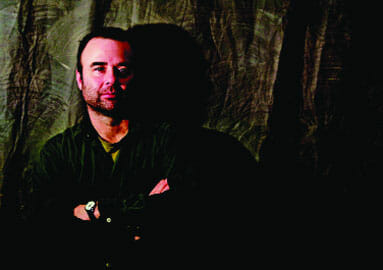Charles D’Ambrosio – The Dead Fish Museum

Stories for Millions of Us, Everywhere: The damned and the damaged inherit the earth in this long-anticipated story collection
In “Screenwriter,” from Charles D’Ambrosio’s new collection, the narrator describes a young dancer at the mental institution they share:
A white moth fell like a flower petal from the sky, dropped through a link in the fence, and came to light on my hand. The cooling night wind raised gooseflesh on my arms, and a cloud of smoke ripped into the air. The girl’s gown was smoldering. A leading edge of orange flame was chewing up the hem. I rose from my seat to tell the ballerina she was on fire. The moth flew from my hand, a gust fanned the flames, there was a flash, and the girl ignited, lighting up like a paper lantern. She was cloaked in fire. The heat moved in waves across my face and I had to squint against the brightness. The ballerina spread her arms and levitated, sur le pointes, leaving the patio as her legs, ass, and back emerged phoenix-like out of this paper chrysalis, rising up until finally the gown sloughed from her shoulders and sailed away, a tattered black ghost ascending in a column of smoke and ash, and she lowered back down, naked and white, standing there, pretty much unfazed, in first position.
The terrible beauty of this passage typifies D’Ambrosio’s precision about characters detached from love, sanity or both. In “Drummond and Son,” a typewriter repairman’s wife leaves him with his adult, mentally distant son, who explains that he “laughs when he sees something sad.” Depicting characters with weak grasps on reality allows the author to unstick words from their familiar meanings. He often uses surreal language to depict disconnected, sometimes hallucinatory experiences. In the title story, for example, an emigrant from El Salvador struggles with English, calling his refrigerator “the dead fish museum.” In the typewriter-repairman story, he and his mentally disabled son spend their bus ride home reading pages of random, fragmented and nonsensical symbols customers have typed during the day. One reads, “???????????!!!!!!” The clearest statement offered reads, “God is dead.”
-

-

-

-

-

-

-

-

-

-

-

-

-

-

-

-

-

-

-

-

-

-

-

-

-

-

-

-

-

-

-

-

-

-

-

-

-

-

-

-








































